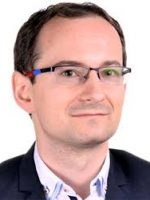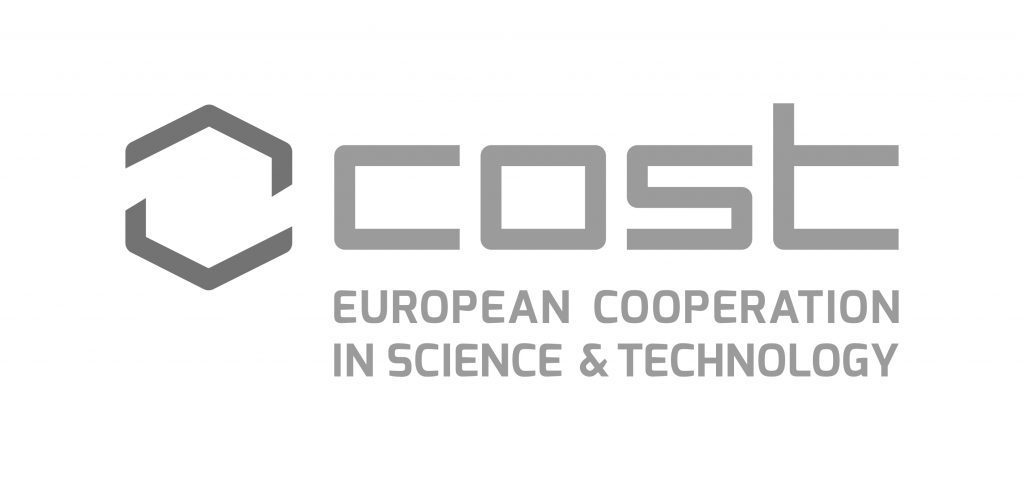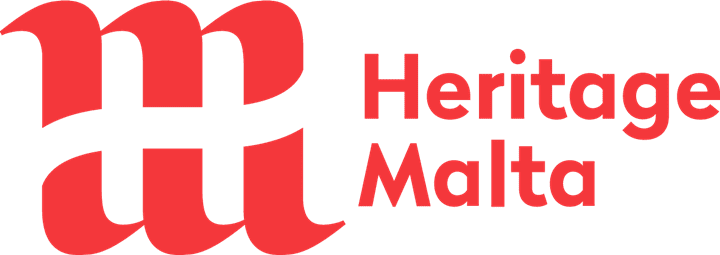
Universidad de Deusto (ES)

Institute of Electronics Lodz University of Technology (PL)
Starting by reviewing sectoral literatures, the WG individuates the main methodological approaches and defines new research questions for the UBH conservation, which are incorporated in the case-studies assessment and in future research needs. The WG pays attention to technologies for UBH non-invasive diagnosis, innovative ICT tools for on-site monitoring tools of the cavities (sensoring) techniques for evaluating the stability of the site, integrated approaches to the stability of cavities, techniques of simulation of underground failures, detailed high-resolution visualisation and reconstruction of the more interesting items of the heritage. The WG contributes to the case-studies assessment and to the training school modules, and finally publishes the results.
Members
WG2 meeting, leaded by Alfonso Bahillo, produced the following meeting results:
Members discussed about the specific (ICT) tools that every member could provide to any of the case studies and/or living labs. These are the (ICT) tools that can be probed in any case study:
Then, a list of questions helped the members to better understand each case study and living lab context, and to focus efforts in such a context. These were the specific questions to be (mainly) answered by the case study stakeholders:
Two members of the WG2 give two technical talks: Thermal imaging by Robert Olbrych (Lodz University of Technology, Poland); Remote Sensing by Zili Li (University College Cork, Ireland).
Presentation Results WG2 COST18110 Presentation WG2 Ancona
At the meeting participated 12 members from Italy, Portugal, Poland, UK, Israel, Turkey and Spain have attended the WG2 meetings. Mostly architects, geologist and engineers. Four technologies for UBH conservation were presented:
Two case studies motivated the fruitful discussion:
In order to identify underground structures, the WG focused on: 1. Geo-radar (when the soil is dry, if there is water it does not work); 2. Electrical Tomography (2D resolution is cheaper but 3D… and there must be coverage. It is a metter of cost); 3. Penetrometer drills after electrical tomography to identify different layer properties. For geo-referencing and mapping the underground, the WG focused on the SLAM with: 1. Laser-scanner (it provides the geometry in gray scale, good but not enough), 2. Lidar + IMU + Vision (+ GNSS) (Is the accuracy enough? Let’s try!); 3. Dead-reckoning using foot-mounted IMU (Is the accuracy enough? Let’s try!). In order to “See behind the walls“, looking for hidden information, common position is using sound and EM waves. Finally bu using remote sensing it is possible remotely monitoring physical parameters (humidity, temperature, progression of cracks and vibrations) and presence of people.
An important issue sorted out from the Living Labs is the dynamic monitoring of the underground structures. One hypothesis is using Polarimetric imaging.
Getting heating/cooling energy from underground using ground source heat pump is seen as a possible collateral application.
As answer to this COST Action needs for a future APP is applying DARIAH (The Digital Research Infrastructure for the Arts and Humanities)
Presentation Results WG2 CA18110 Presentation WG2 Naples
Murcia (ES), November 18-20th 2020
Technologies for UBH non-invasive diagnosis and on-site monitoring
During the Murcia meeting held on November 18, 2020, this WG paid attention to the technologies for UBH non-invasive diagnosis and innovative ICT tools for on-site monitoring. The meeting was attended by 13 people, mostly architects and engineers, coming from different countries: Italy, Portugal, Poland, Ireland, Turkey and Spain.
On the morning of November 18, 2020, we start the meeting discussing on two main technologies for UBH non-invasive and on-site monitoring. On the one hand, Robert Olbrycht from Lodz University of Technology started comparing thermal imaging and electrical tomography for non-destructive analysis of moisture in walls. Monitoring of moisture in walls is important for the protection of built cultural heritage. It can be performed by means of thermal imaging, where damp areas may be found due to the changes in surface temperature distribution. This technique enables fast, non-destructive and non-contact inspection, but is not immune to external conditions that may hamper the research. In addition, it does not provide dampness depth profile, as only the surface is being examined. In cases, where this depth profile is required, one can use electrical tomography techniques, that require placing electrodes at available surfaces of an investigated object, e.g. column. Despite this fact, this technique remains non-destructive and its advantage is also better immunity to external conditions.
On the other hand, Roberto Pierdicca from Università Politecnica delle Marche continued with a case study in the city of Camerano using innovative data collection techniques for the valorization of UBH [https://univpm-my.sharepoint.com/:v:/g/personal/p007412_staff_univpm_it/ESH5ZIgWfT1GrMB3S0SzbugBFfwJxRrGmI7ksL7fBwZl6w?e=Tr0NCJ]
The city of Camerano (IT) represents a local heritage and a landmark for its network of connected built underground spaces. Special attention is given to the digital dimension of Cultural Heritage. An asset for the next decade, in particular after the COVID-19 pandemic. Surveys of the interior environment of the caves were carried out using two laser instruments in different acquisition modes. The use of the static laser scanner requires a longer time for both the acquisition and the subsequent processing phases. The use of a mobile laser scanner makes it possible to scan and record the underground environment in real time in just a few hours, thus providing a fast and agile solution. This means that it is possible to go more often for constant and rapid monitoring. The integration of spherical photos taken along the route of the caves themselves offers the possibility of creating a virtual reality (VR) tour that can be integrated with a 3D model of the entire underground environment. This allows the caves to be visited from a virtual point of view when they are closed for restoration work or in cases of emergencies, such as pandemic one.
We ended the meeting welcoming Luis J. Sánchez from Universidad Politécnica de Madrid who introduced us on the three main projects and technologies he is currently working with and using. These were HeritageCARE (Monitoring and Preventive Conseration of Historic and Cultural Heritage) [link, https://www.heritagecare.eu/]. This European project has been focused on the development of a non-profit association devoted to the preventive conservation of historical construction within Portugal, Spain and South-West of France. Apart of this, this project has developed a standardized protocol for the preventive conservation of heritage site based on digital tools. This protocol is articulated in a total of 3 service level. The first service level (StandardCare) is focused on carrying out a visual inspection of the site supported by a specific app. The second level (PlusCare) includes the use of a novel Web-GIS system based on 360º images and 3d point cloud for the advanced management of the site. The last level (TotalCare) incorporates the use of BIM tools for the preventive maintenance of the site. CHT-2 (Cultural Heritage through time) [link, https://cht2.eu/]. This JPI Action aims at developing a novel protocol and tool for the management and visualization of heritage through the time. One of the most prominent outputs of this project was the development of an in-house web-based 4D viewer for consulting the evolution of heritage through the time, including the historical images and texts in form of hotspots. SmartWall (Development of a digital platform for the valorization of the Mediaeval Wall of Avila) [link, https://www.avilaturismo.com/en/what-to-do/walls-of-avila]. Research project devoted to the development of a new 360º platform for the valorization of tangible and non-tangible heritage associated with the Mediaeval Wall of Avila. This platform includes also a novel 4D view to check the evolution of part of the Wall along the time. Apart of the great intuitiveness, the platform takes into consideration the different type users (expert users, non-expert users and kids), adapting the information showed with respect to its expertise.
Finally, for the UBH valorisation we missed some tools for community building through participatory design and co-creation methodologies which allow the researcher to work with local groups and stakeholders, and to study, discuss and analyse sites of interest in any city, that can be enacted today in many variable contexts with the help of smartphones. To this end, Alfonso Bahillo from the University of Deusto proposed the use of the Dariah app which consists of an application (designed for Android) capable of collecting a variety of audio-visual, geolocative and textual materials, and it functions as a unique support for innovative participatory practices [link, https://play.google.com/store/apps/details?id=mobility.deustotech.dariah_android&hl=en_US].
Camerano underground spaces: 3D scan with mobile mapping system
Web-GIS system developed within the framework of HeritageCARE. Source: https://www.sciencedirect.com/science/article/abs/pii/S0926580520306749
4D Viewer. Source: https://www.mdpi.com/2220-9964/8/2/61/htm
Advanced numerical simulation of a bridge. Source: https://sci-hub.st/https://www.sciencedirect.com/science/article/abs/pii/S0926580519300226#!
SmartWall platform. Source: https://www.int-arch-photogramm-remote-sens-spatial-inf-sci.net/XLII-2-W15/1055/2019/isprs-archives-XLII-2-W15-1055-2019.pdf
Lisbon (PT), October 13-15th 2021
Working Group 2 is focused on technologies enabling monitoring and diagnosis of UBH in non-invasive manner. During the Lisbon meeting, WG2 members presented the progress on work with it. The considered technologies are, among others, portable 3D mapping systems, cracks and water leakage sensors, tools for simulating changes in material characteristics due to climatic effects, assessment protocols for the possible uses of UBH sites, imaging in different spectral ranges, virtual platform for the valorization and preventive conservation. In addition, basing on the presentations, index cards were created to bring structured information about the technologies to facilitate the toolbox creation. In particular, each index card brings short description of each technology, contact person data, information about applications, functionalities and methods. There is also content that may be interesting for stakeholders, such as the market potential, duration of measurement, difficulty of use, safety precautions and required conditions e.g. the need of certain ambient light level.
Publication: Torresani, A., Menna, F., Battisti, R., Remondino, F., 2021. A V-SLAM Guided and Portable System for Photogrammetric Applications. Remote Sensing, 13(12), 2351
Action Chair: Giuseppe Pace
Action Vice Chair: Susana Martinez-Rodriguez
Science Communication Manager: Tony Cassar
Grant Holder Manager: Patricia Sclafani
Webmaster: Olga Lo Presti


Webdesign by Digitisation Department at
